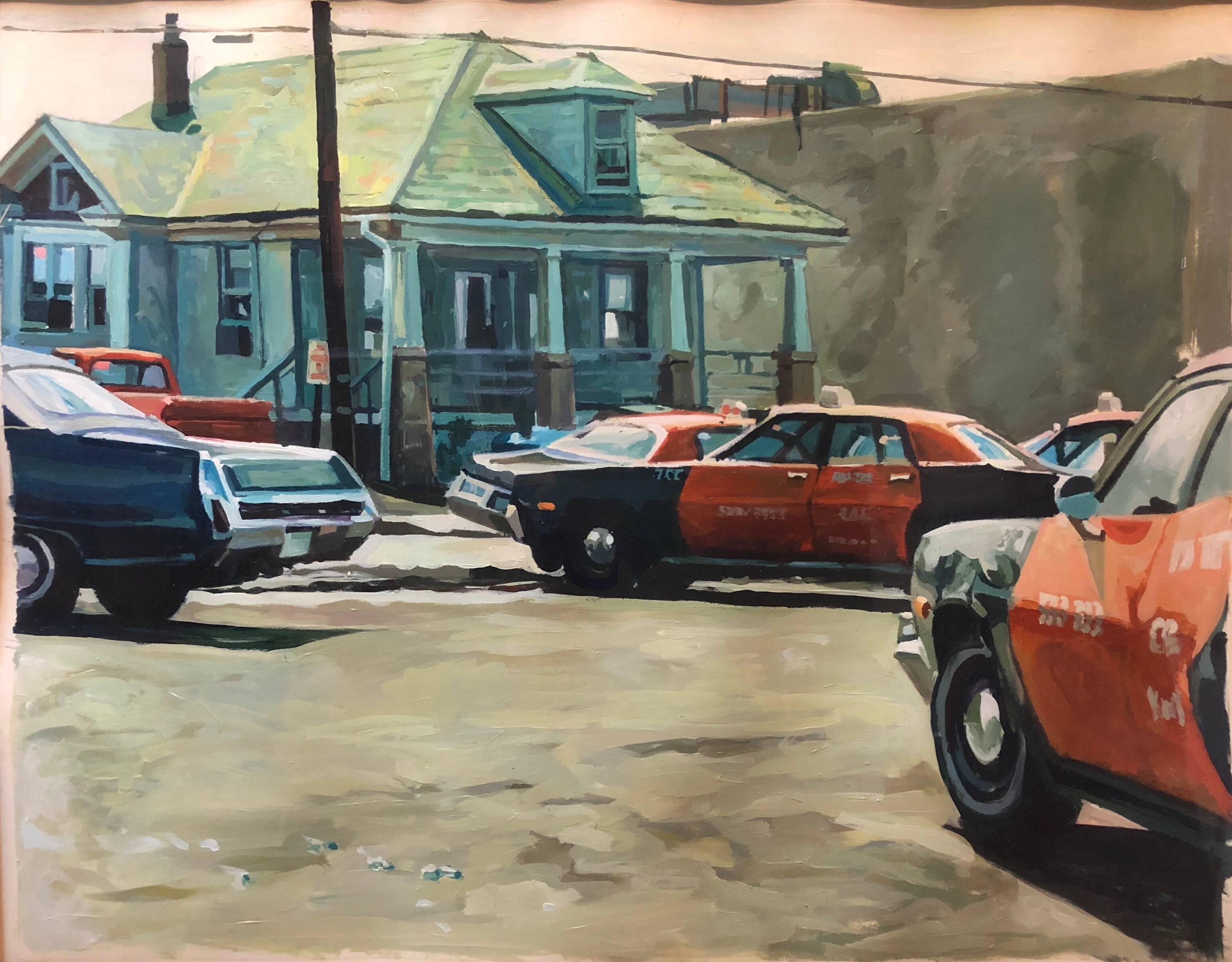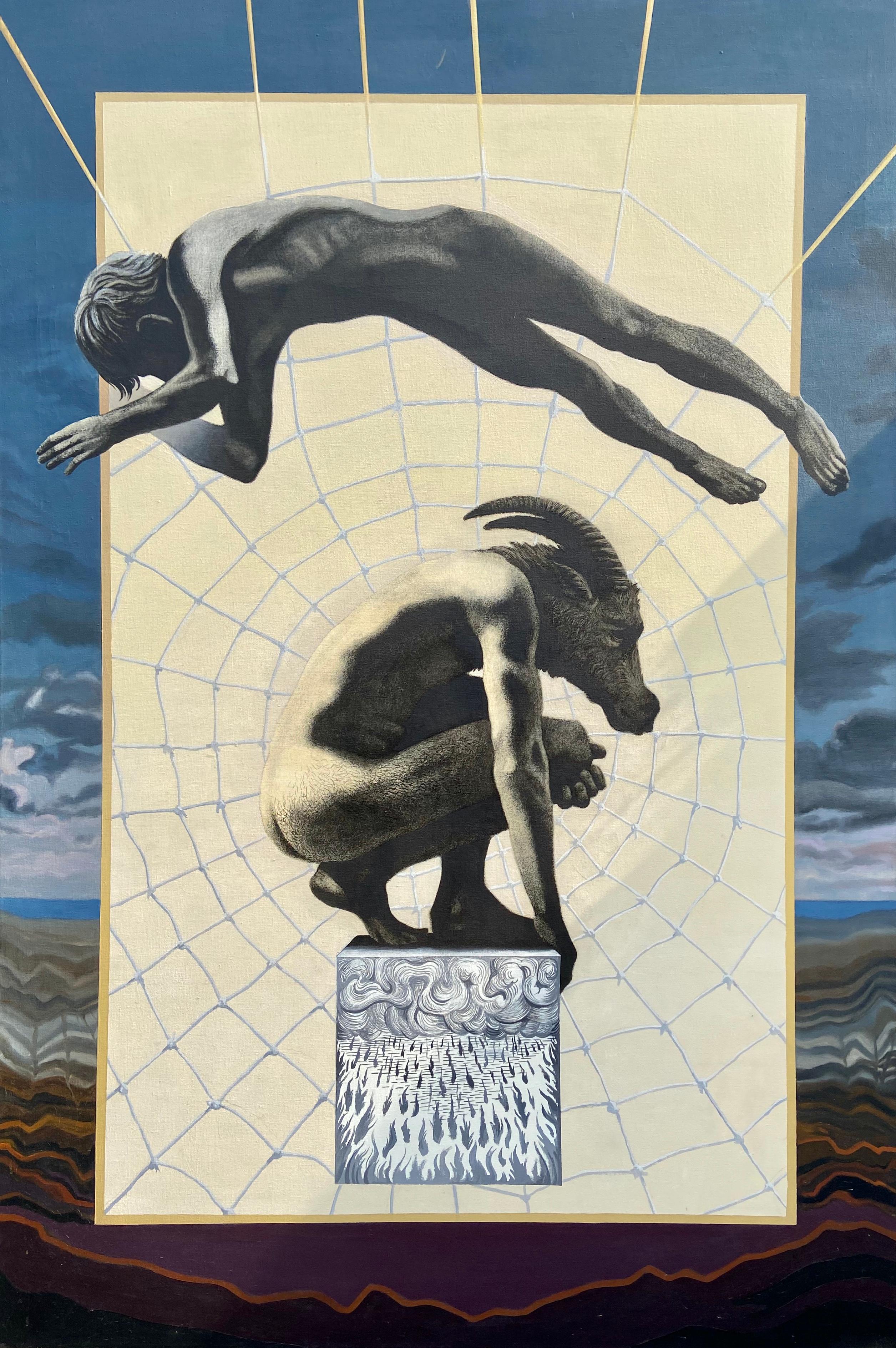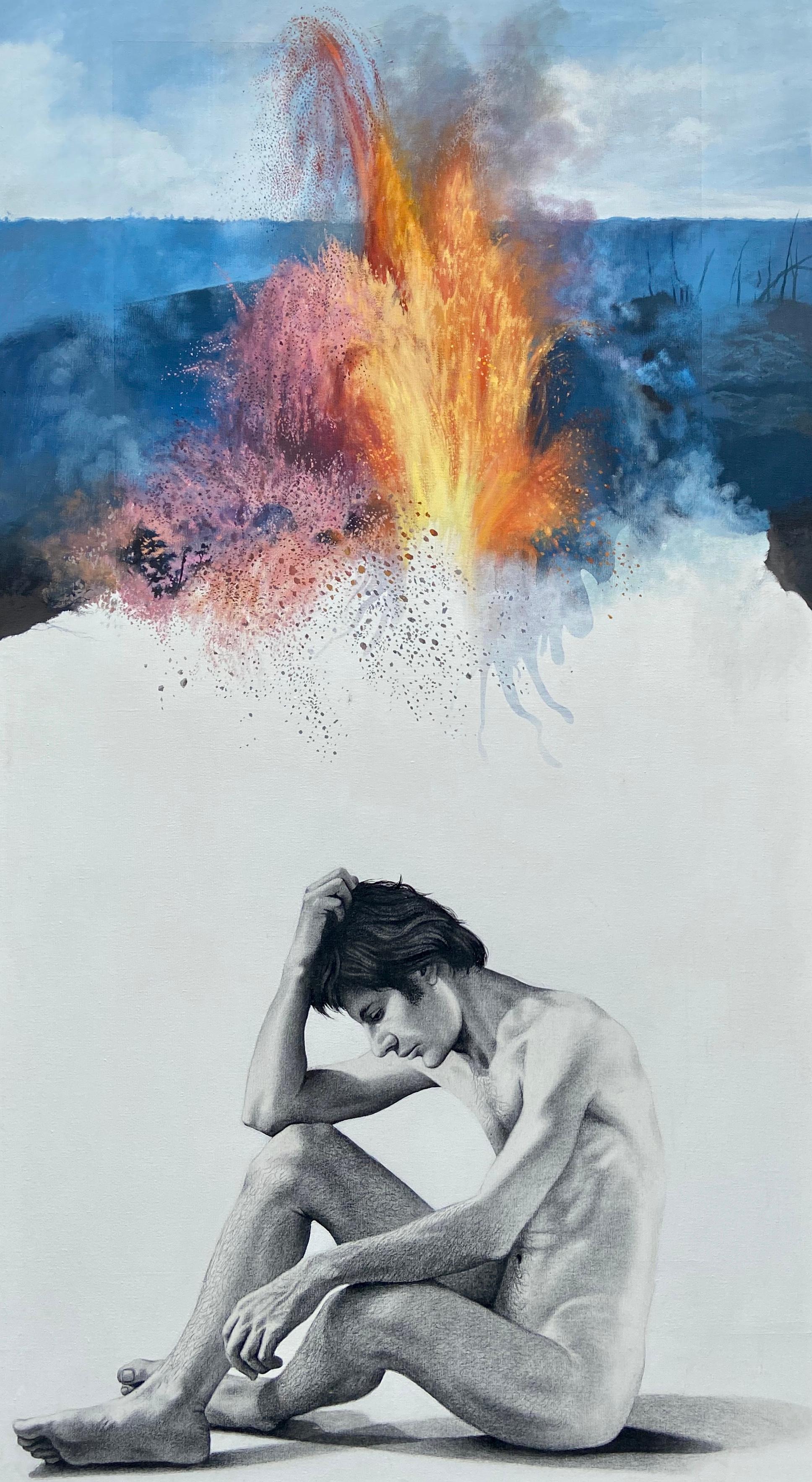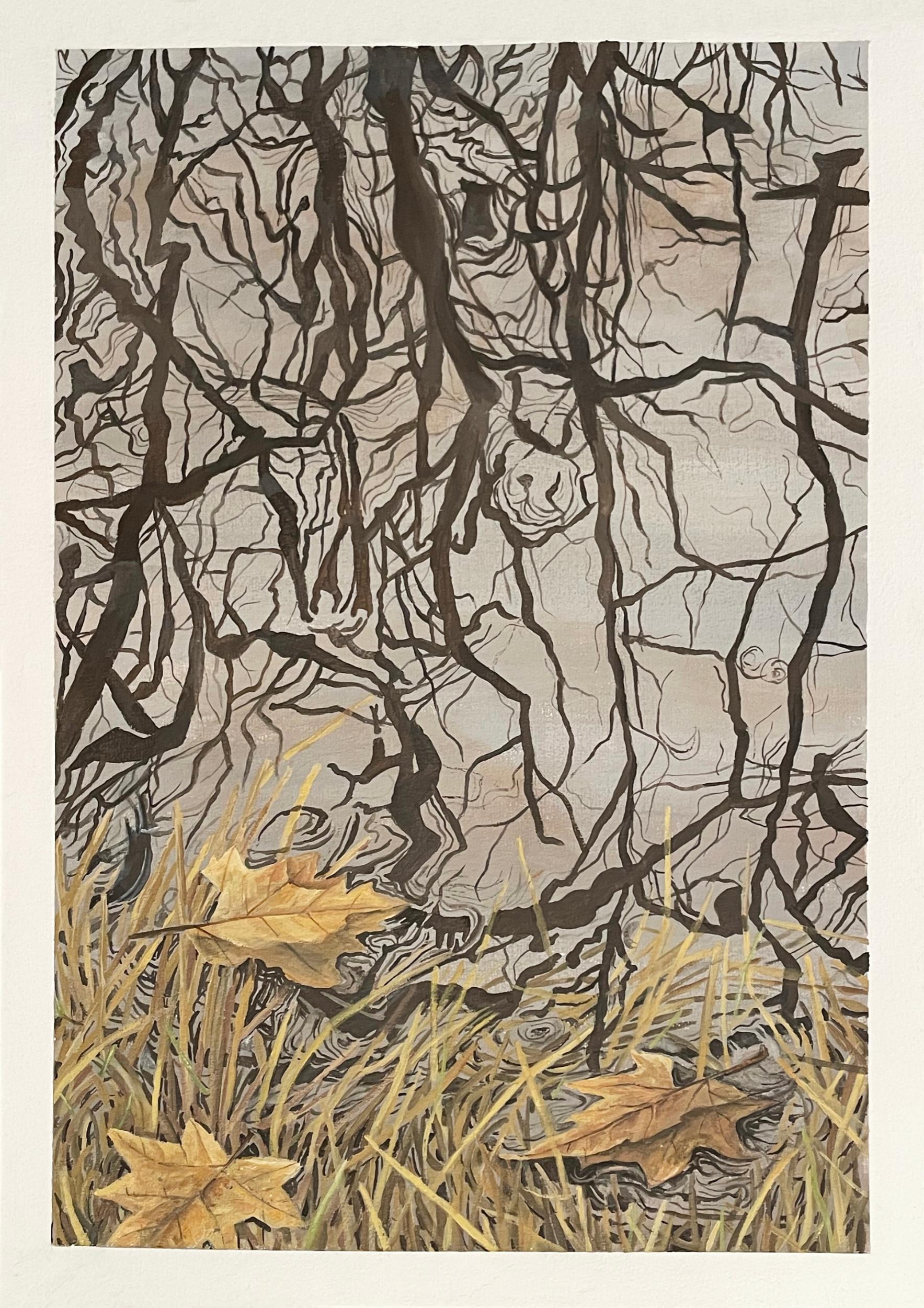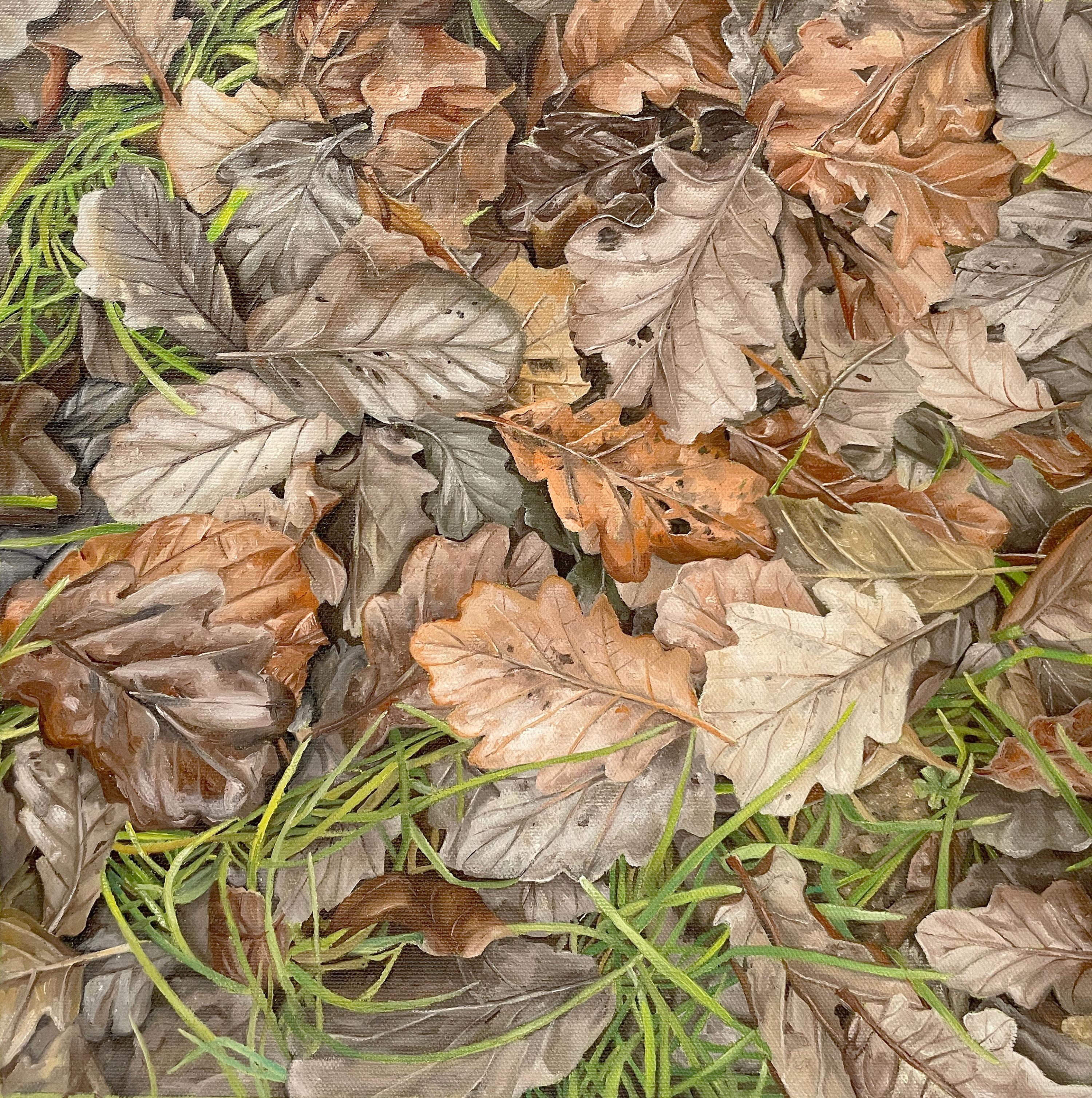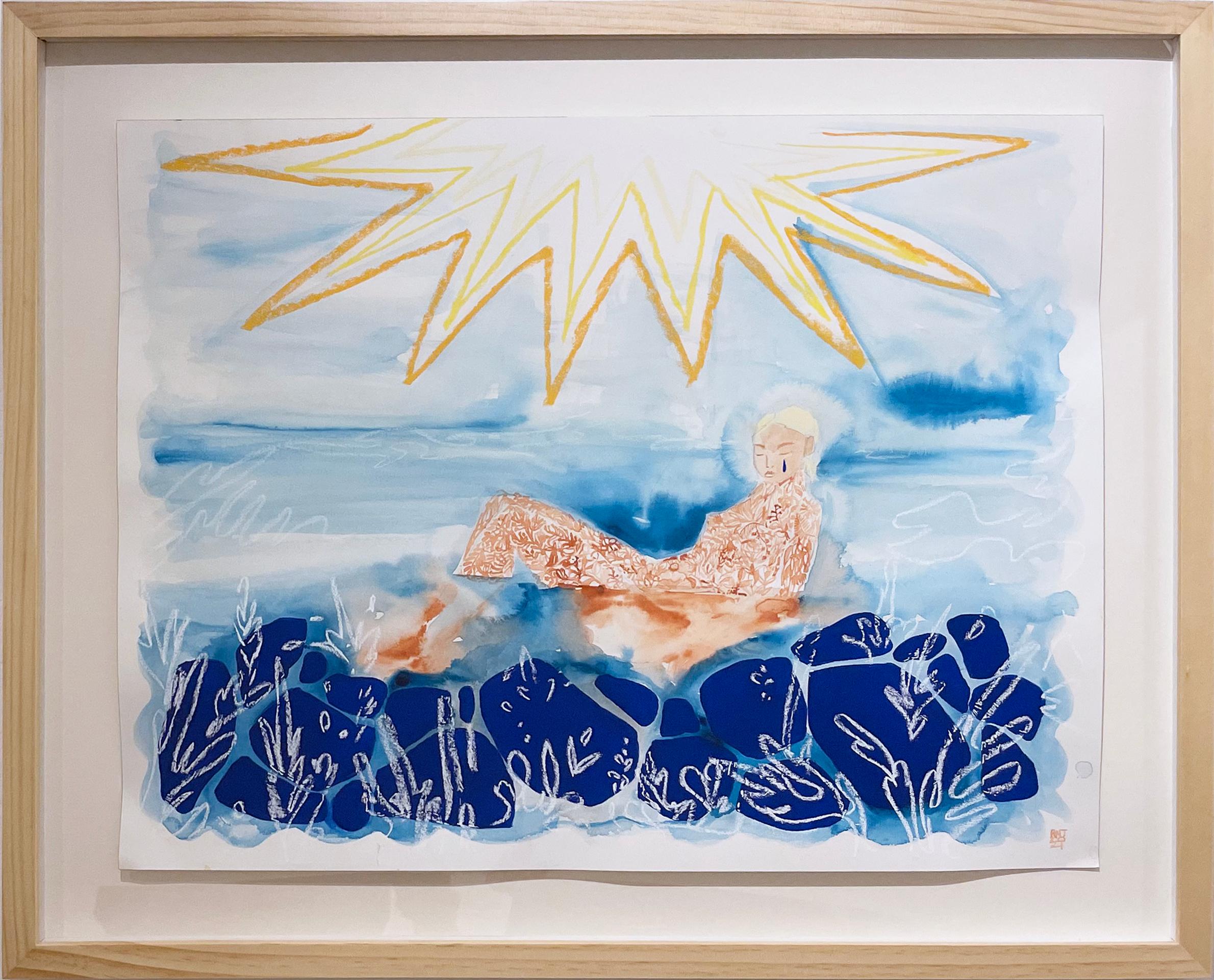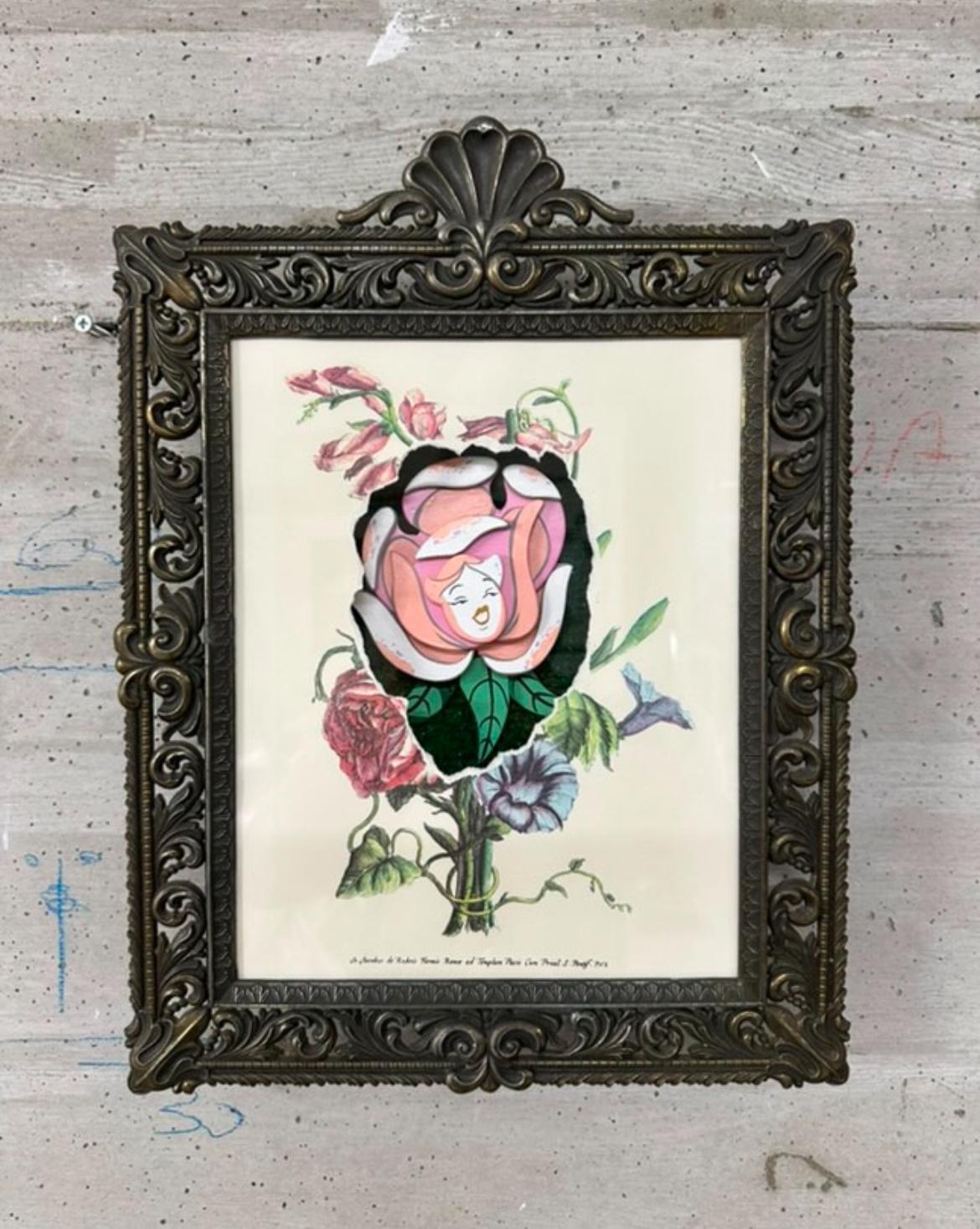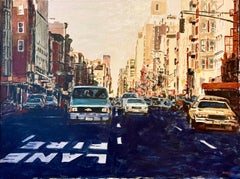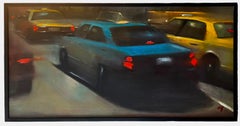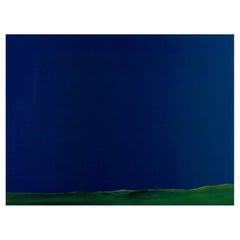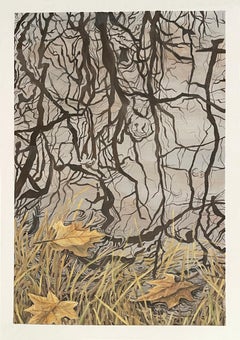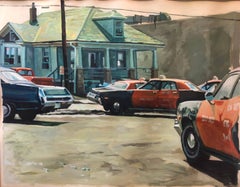
1980s Vintage American Street Scene Painting, Landscape with Taxi Cabs
View Similar Items
Want more images or videos?
Request additional images or videos from the seller
1 of 7
Val Lewton1980s Vintage American Street Scene Painting, Landscape with Taxi Cabs1983
1983
$4,000List Price
About the Item
- Creator:Val Lewton (1937, American)
- Creation Year:1983
- Dimensions:Height: 32.5 in (82.55 cm)Width: 41 in (104.14 cm)
- Medium:
- Movement & Style:
- Period:
- Condition:wear to frame, light waviness to paper.
- Gallery Location:Surfside, FL
- Reference Number:1stDibs: LU3822441811
About the Seller
4.9
Platinum Seller
Premium sellers with a 4.7+ rating and 24-hour response times
Established in 1995
1stDibs seller since 2014
1,777 sales on 1stDibs
Typical response time: 1 hour
Authenticity Guarantee
In the unlikely event there’s an issue with an item’s authenticity, contact us within 1 year for a full refund. DetailsMoney-Back Guarantee
If your item is not as described, is damaged in transit, or does not arrive, contact us within 7 days for a full refund. Details24-Hour Cancellation
You have a 24-hour grace period in which to reconsider your purchase, with no questions asked.Vetted Professional Sellers
Our world-class sellers must adhere to strict standards for service and quality, maintaining the integrity of our listings.Price-Match Guarantee
If you find that a seller listed the same item for a lower price elsewhere, we’ll match it.Trusted Global Delivery
Our best-in-class carrier network provides specialized shipping options worldwide, including custom delivery.More From This Seller
View All1980s Vintage American Street Scene Painting, Landscape with Taxi Cabs
By Val Lewton
Located in Surfside, FL
Val Edwin Lewton (May 23, 1937 – April 24, 2015) was a painter and museum exhibition designer. As an artist, he created Realist acrylic paintings and watercolors of urban and suburban scenes, predominantly in the Washington, D.C., area, where he lived and exhibited.
Val Lewton was born May 23, 1937, in Santa Monica, California. His father, also named Val Lewton, produced a string of successful and influential B movies for RKO Pictures, including Cat People (1942) and I Walked with a Zombie (1943). His mother, Ruth Knapp, was a painter and teacher of autistic children.
He graduated in 1959 from Whitman College in Walla Walla, Washington, and earned a master's degree in fine arts from Claremont University in 1962. After moving to Washington, D.C., he served on the staff of the Smithsonian American Art Museum for 32 years, simultaneously maintaining a career as a painter in his own right.
Lewton died in 2015s oon afterwards, exhibitions of his paintings were planned for the Katzen Arts Center (June 17 – August 13, 2017) and Addison/Ripley Fine Art (June 3 – July 8, 2017).
Chiefly known for his landscapes, Lewton generally depicted cities and suburbs with a detached, impersonal sensibility. Writing about his watercolors in Arts magazine in 1980, Harry Rand observed, “Either by implication or statement, personalities are absent from Lewton’s work; there is hardly a sense of the lives that move through those spaces he describes.” The critic compared the artist to Fairfield Porter, Edward Hopper, and Charles Sheeler.
Lewton painted from a young age. On a family trip to the Museum of Modern Art in New York City, he discovered the work of Henri Matisse, an encounter that permanently influenced his artistic vision. In the early 1960s, Lewton lived in southern California and taught art classes at the University of California Riverside. During this period, he was inspired by the paintings of Roger Kuntz...
Category
1980s Photorealist Landscape Paintings
Materials
Acrylic, Archival Paper
Arie Azene Israeli Photo Realist Oil Painting Manhattan New York Street Scene
By Arie Azene
Located in Surfside, FL
Arie Azene, Israeli painter, born in Germany, 1934
Arie (Eisman) Azene was born in Hamburg, Germany. He immigrated to the Land of Israel with his parents soon after birth. In 1958, after studying art in Paris, he settled on Kibbutz Tzova in the Judean Hills, where he lived for 28 years. He spent 1968-1970 in France, England and Germany. In 1984, he moved to Jerusalem.
Stylistically, Azene was influenced by the New Horizons group to which he was exposed during his studies at the Avni Institute in Tel Aviv. Other influences were Joseph Zaritsky, Avigdor Stematsky and Yehezkel Streichman.
Azene works in oil paint, pencil and aquarelle. His early work was abstract, but over the years, it has become more figurative and realistic. His colour palette is often based on two complementary hues, with a predominance of various combinations of gray.
Education
1948-51 Avni Institute, Tel Aviv
1951-52 Bezalel Academy of Arts and Design, Jerusalem
1957-58 Academie de la Grande Chaumiere, Paris, France, Advanced Studies
Select Exhibitions
Autumn Exhibition Autumn Exhibition Yad Lebanim Museum, Petach Tikva 1974
Artists: Shimon Avni, Mordechai Avniel, Azene, Arie, Eli Ilan, Michael Argov, Naftali Bezem, Nachum Gutman, Shraga Weil, Boaz Vaadia, Shmuel Katz, Ruth Schloss.
Zaritsky Artists House, Tel Aviv 1976
Artists: Yitzhak Danziger, Menashe Kadishman, Osvaldo Romberg, Michal Wolman, Raffi Lavie
The Kadishman Connection Israel Museum, Jerusalem 1979
Artists: Larry Abramson, Jacob El Hanani, Ovadia Alkara, Yosl Bergner, Marcel Janco, Lea Nikel, George Chemeche, Igael Tumarkin.
Israeli Prints...
Category
1990s Photorealist Landscape Paintings
Materials
Canvas, Oil
Magic Realist Surrealist Latin American Naive Fantasy Painting
By German Ramon Duron Lanza
Located in Surfside, FL
Magic realist fantasy painting in the manner of Ernst Fuchs and Arik Brauer.
Naïve art is any form of visual art that is created by a person who lacks the formal education and training that a professional artist undergoes (in anatomy, art history, technique, perspective, ways of seeing). Unlike folk art, naïve art does not necessarily evince a distinct cultural context or tradition. Naïve art is recognized, and often imitated, for its childlike simplicity and frankness. Paintings of this kind typically have a flat rendering style with a rudimentary expression of perspective.
One particularly influential painter of "naïve art" was Henri Rousseau (1844–1910), a French Post-Impressionist who was discovered by Pablo Picasso.
Naïve art is often seen as outsider art that is by someone without formal (or little) training or degree. While this was true before the twentieth century, there are now academies for naïve art. Naïve art is now a fully recognized art genre, represented in art galleries worldwide.
Museums devoted to naïve art now exist in Kecskemét, Hungary; Riga, Latvia; Jaen, Spain; Rio de Janeiro, Brasil; Vicq France and Paris. "Primitive art" is another term often applied to art by those without formal training, but is historically more often applied to work from certain cultures that have been judged socially or technologically "primitive" by Western academia, such as Native American, sub saharan African or Pacific Island art (see Tribal art). This is distinguished from the self-conscious, "primitive" inspired movement primitivism. Another term related to (but not completely synonymous with) naïve art is folk art.
There also exist the terms "naïvism" and "primitivism" which are usually applied to professional painters working in the style of naïve art (like Paul Gauguin, Mikhail Larionov, Paul Klee).
At all events, naive art can be regarded as having occupied an "official" position in the annals of twentieth-century art since - at the very latest - the publication of the Der Blaue Reiter, an almanac in 1912. Wassily Kandinsky and Franz Marc, who brought out the almanac, presented 6 reproductions of paintings by le Douanier' Rousseau (Henri Rousseau), comparing them with other pictorial examples. However, most experts agree that the year that naive art was "discovered" was 1885, when the painter Paul Signac became aware of the talents of Henri Rousseau and set about organizing exhibitions of his work in a number of prestigious galleries.
The Earth Group (Grupa Zemlja) were Croatian artists, architects and intellectuals active in Zagreb from 1929 to 1935. The group included the painters Krsto Hegedušić, Edo Kovačević, Omer Mujadžić, Kamilo Ružička, Ivan Tabaković, and Oton Postružnik, the sculptors Antun Augustinčić, Frano Kršinić, and the architect Drago Ibler.
A term applied to Yugoslav (Croatian) naive painters working in or around the village of Hlebine, near the Hungarian border, from about 1930. Some of the best known naive artists are Dragan Gaži, Ivan Generalić, Josip Generalić, Krsto Hegedušić, Mijo Kovačić, Ivan Lacković-Croata, Franjo Mraz, Ivan Večenaj and Mirko Virius.
Camille Bombois (1883–1970) Ferdinand Cheval, known as 'le facteur Cheval' (1836–1924)
Henry Darger (1892–1973) L. S. Lowry (1887–1976) Grandma Moses, Anna Mary Robertson (1860–1961) Nikifor (1895–1968) Poland, Horace Pippin (1888–1946) Jon Serl (1894-1993) United States
Alfred Wallis (1855–1942) Scottie Wilson (1890–1972) Gesner Abelard (b. 1922) Jan Balet (1913–2009) Michel Delacroix (b. 1933) France Howard Finster (1916–2001) Ivan Rabuzin (1921–2008)
Spontaneous Art Museum in Brussels
Art en Marge Museum in Brussels
MADmusée in Liege
International Museum of Naive Art of Brazil in Cosme Velho, Rio de Janeiro
Gallery Jacques Ardies in São Paulo
Musée international d'art naïf de Magog in Magog
Croatian Museum of Naïve Art in Zagreb
Gallery of Croatian Naïve Art...
Category
20th Century Folk Art Figurative Paintings
Materials
Canvas, Acrylic
Large Suong Yangchareon Thai American Photorealist LA California Street Painting
Located in Surfside, FL
Suong Yangchareon (Thai American, 1952-)
Acrylic on Canvas
Los Angeles Street Scene with yellow taxi cab and cars.
Hand signed with Initials.
Dimensions: Overall Size: 25 1/4 x 49 1/4 in. Sight Size: 23 5/8 x 47 5/8 in.
Yangchareon came to Los Angeles, California from Lampang, Thailand, Southeast Asia where he studied Fine Arts at the Arts & Crafts College (Poh Chang), Bangkok, Thailand and Sculpture and Graphic Arts, Silpakorn University, Bangkok, Thailand. In California he continued his studies at Woodbury University, receiving a degree in Advertising Design. He is a contemporary figurative realist artist. He painted the urban landscape of California, which have been exhibited in solo and group shows. His work is represented by prominent galleries nationally. Yangchareon spent much of his childhood at his father’s movie theater where he became fascinated with the world of American Westerns. The nostalgia for this idyllic film Americana can be garnered through his subject matter. Abandoned theaters, factories and businesses of an almost extinct era of architecture are carefully rendered in the soft morning light. Working from his own photography, shot during the early hours of the day, Yangchareon’s acrylic and oil paintings are largely devoid of human figures, but deeply imbued with their past presence. Recently, the artist has broadened his focus to include imagery of the city at night––rendering glistening rain-soaked sidewalks bathed in the artificial light of street lamps and movie marquees against an inky black sky. Yet, Yangchareon’s motivation remains the same; to find the hidden beauty in varying industrial landscapes and seeing splendor where most would argue it does not exist. Reminiscent of Edward Hopper, a sense of melancholy pervades his compositions in a quiet, detached manner. The influence of Richard Diebenkorn and Wayne Thiebaud can also be detected in the artist’s sense of color and in his interpretation of light. Moody LA auto culture artwork dealing with themes of isolation and alienation.
Select Exhibitions
2017 Golden Dreams, The Hilbert Museum of California Art at Chapman University, Orange, CA
2016 In the Land of Sunshine: Imaging the California Coast Culture, Pasadena Museum of California Art
2016 Recent Paintings & Works on Paper, Paul Thiebaud Gallery, San Francisco, CA
2013–2014 Suong Yangchareon: Places Out of Time, St. Supéry Estate, Vineyards & Winery, Rutherford, CA
2012 Palm Springs Fine Art Fair, Palm Springs Convention Center
LA Art Show, Los Angeles Convention Center
Paintings, Paul Thiebaud Gallery, San Francisco, CA (solo)
Texas Contemporary Art Fair, George R. Brown Convention Center,
artMRKT San Francisco, Concourse Exhibition Center
Art Chicago 2011, Merchandise Mart, Chicago, IL
2010 San Francisco Fall Antiques Show, Fort Mason, San Francisco, CA
San Francisco Fine Art Fair, Fort Mason, San Francisco, CA
Art Chicago 2010, Merchandise Mart, Chicago IL
2009 Recent Paintings, Paul Thiebaud Gallery, San Francisco, CA (solo)
2008 Twenty-Five Treasures, Paul Thiebaud Gallery, San Francisco, CA
Robert Arneson, Joan Brown, Fred Dalkey, Eileen David,
Roy De Forest, Richard Diebenkorn, David Fertig, John Graham,
Robert Hudson, Ed Musante, Manuel Neri, Arthur Okamura,
John Santoro, Richard Shaw, Pam Sheehan...
Category
20th Century Figurative Paintings
Materials
Canvas, Acrylic
Large Israeli Naive Art Screen Enamel Oil Painting Jerusalem Old City Folk Art
By Gabriel Cohen
Located in Surfside, FL
JERUSALEM, Vielle du David, (City of David) Superlac (enamel) painting on paper, hand signed, titled and dated.
Provenance: Michael Hittleman Gallery Los Angeles.
Gabriel Cohen, (...
Category
20th Century Folk Art Landscape Paintings
Materials
Paper, Oil, Alkyd
Fantastic Village Scene Modern Irish Magic Realism Oil Painting
By Philip Castle
Located in Surfside, FL
Philip Castle was an Irish Painter and husband to artist Barry Castle
He is rarely exhibited. His detailed, meticulous work took a long time to complete and his output was quite li...
Category
20th Century Folk Art Landscape Paintings
Materials
Canvas, Oil
You May Also Like
Sorcerer Series: Beast Head, Spider Web
By Ian Hornak
Located in Fairfield, CT
Artist: Ian Hornak (1944-2002)
Title: Sorcerer Series: Beast Head, Spiderweb
Year: February 1969
Medium: Acrylic on Canvas
Size: 72 x 48 inches
Condition: Excellent
Inscription: Sign...
Category
1960s Photorealist Landscape Paintings
Materials
Canvas, Acrylic
$70,400 Sale Price
20% Off
Figure, Volcano
By Ian Hornak
Located in Fairfield, CT
Artist: Ian Hornak (1944-2002)
Title: Figure, Volcano (John Huszar)
Year: June 1971
Medium: Acrylic, Pen & Ink on Canvas
Size: 72 x 48 inches
Condition: Ex...
Category
1970s Photorealist Landscape Paintings
Materials
Canvas, Acrylic
$70,400 Sale Price
20% Off
Chroma sky (Blue key) 10 - Contemporary, Blue, Minimalist, Figurative, Landscape
By Cătălin Petrișor
Located in Baden-Baden, DE
Chroma sky (Blue key) 10, 2007
Acrylic and oil on canvas
(Signed on reverse)
23.62 H x 31.49 W in
60 H x 80 W cm
The artist wrote about how he conceives this work:
"The transformat...
Category
Early 2000s Photorealist Landscape Paintings
Materials
Canvas, Oil, Acrylic
Gather on surface, Acrylic Paint on Paper, Leafs, Water reflections, Nature
Located in AIX-EN-PROVENCE, FR
Work : Original Acrylicr Painting, Unique Work. Handmade artwork. Ready to Hang.
Medium : Watercolor on Archival paper
Artist : Deniz Bayav
Subject : Réunir à la surface (Title)
W...
Category
21st Century and Contemporary Photorealist Landscape Paintings
Materials
Acrylic
End December, Oil painting on Canvas, Leafs, Forest, Realistic Nature, Botanical
Located in AIX-EN-PROVENCE, FR
Work : Original Oil Painting, Unique Work. Handmade artwork. Ready to Hang.
Medium : Oil and Acrylic painting on Canvas.
Artist : Deniz Bayav
Subject : Fin de décembre (Title / FR) ...
Category
21st Century and Contemporary Photorealist Landscape Paintings
Materials
Canvas, Oil, Acrylic
Rise and Grind - Original Photorealist Painting Coffee Scrabble Board Artwork
By Kathleen Keifer
Located in Los Angeles, CA
Kathleen Keifer's original artworks represent one of the most significant expressions of New California Realism. Keifer brings a fresh perspective to her colorful scenes of everyday ...
Category
21st Century and Contemporary Photorealist Figurative Paintings
Materials
Canvas, Acrylic
Recently Viewed
View AllMore Ways To Browse
Vintage Taxi Cabs
Vintage Tiffany Cross
Tiffany Frank Lloyd Wright
Trompe L Oeil Tiffany
Dale Tiffany
No Parking Sign Vintage
Norma Shearer
Norman Rockwell Coffee
Northwest Coast Mask
Olivia Newton John
Orca Whale Art
Orkin Ruth
Otomi Art
Pablo Picasso Serie
Paloma Picasso Limited Edition Lithograph
Pasta Print
Patricia Mitchell
Paul Rand Posters
